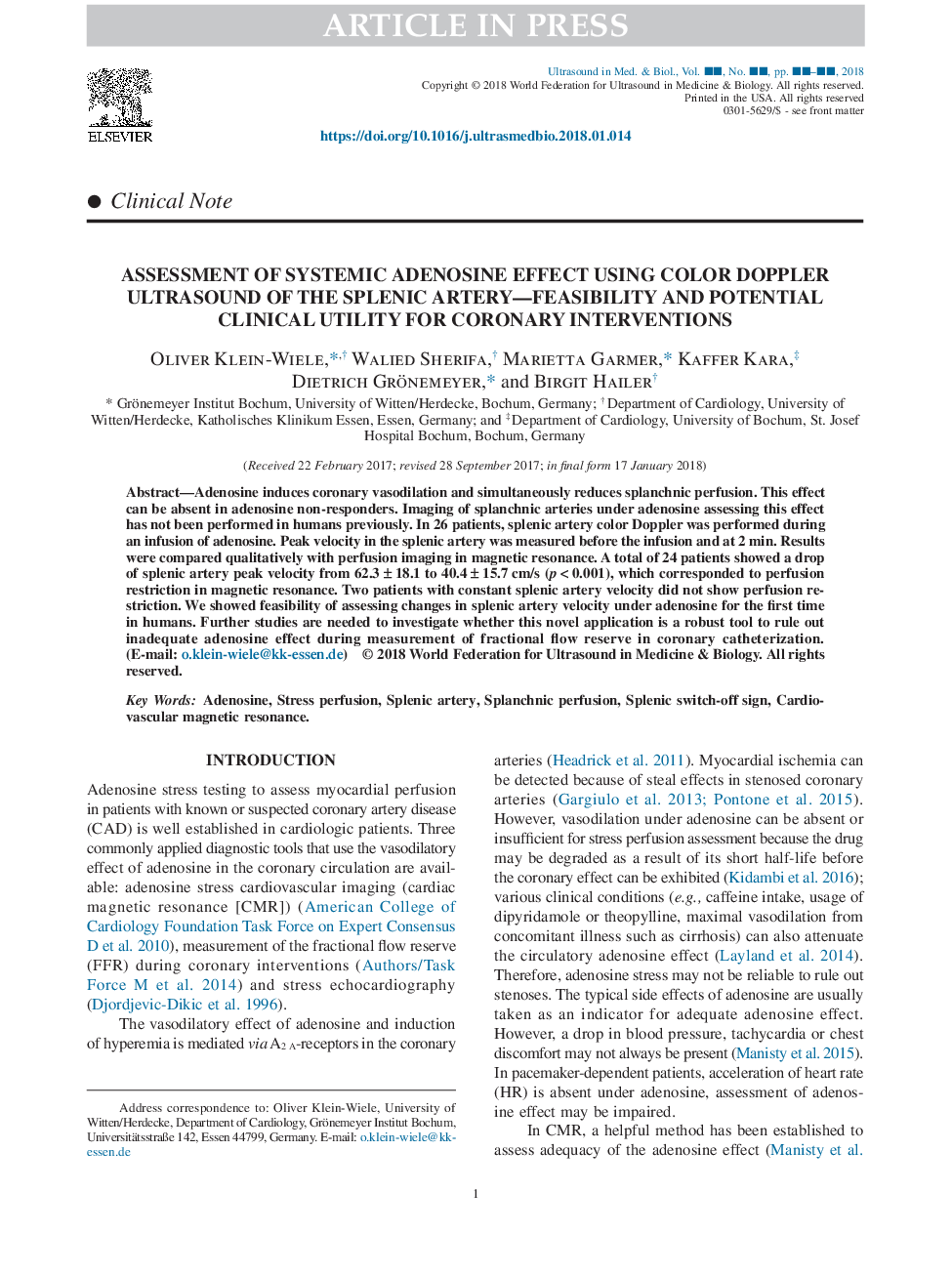| Article ID | Journal | Published Year | Pages | File Type |
|---|---|---|---|---|
| 8131219 | Ultrasound in Medicine & Biology | 2018 | 5 Pages |
Abstract
Adenosine induces coronary vasodilation and simultaneously reduces splanchnic perfusion. This effect can be absent in adenosine non-responders. Imaging of splanchnic arteries under adenosine assessing this effect has not been performed in humans previously. In 26 patients, splenic artery color Doppler was performed during an infusion of adenosine. Peak velocity in the splenic artery was measured before the infusion and at 2âmin. Results were compared qualitatively with perfusion imaging in magnetic resonance. A total of 24 patients showed a drop of splenic artery peak velocity from 62.3â±â18.1 to 40.4â±â15.7âcm/s (pâ<0.001), which corresponded to perfusion restriction in magnetic resonance. Two patients with constant splenic artery velocity did not show perfusion restriction. We showed feasibility of assessing changes in splenic artery velocity under adenosine for the first time in humans. Further studies are needed to investigate whether this novel application is a robust tool to rule out inadequate adenosine effect during measurement of fractional flow reserve in coronary catheterization.
Keywords
Related Topics
Physical Sciences and Engineering
Physics and Astronomy
Acoustics and Ultrasonics
Authors
Oliver Klein-Wiele, Walied Sherifa, Marietta Garmer, Kaffer Kara, Dietrich Grönemeyer, Birgit Hailer,
